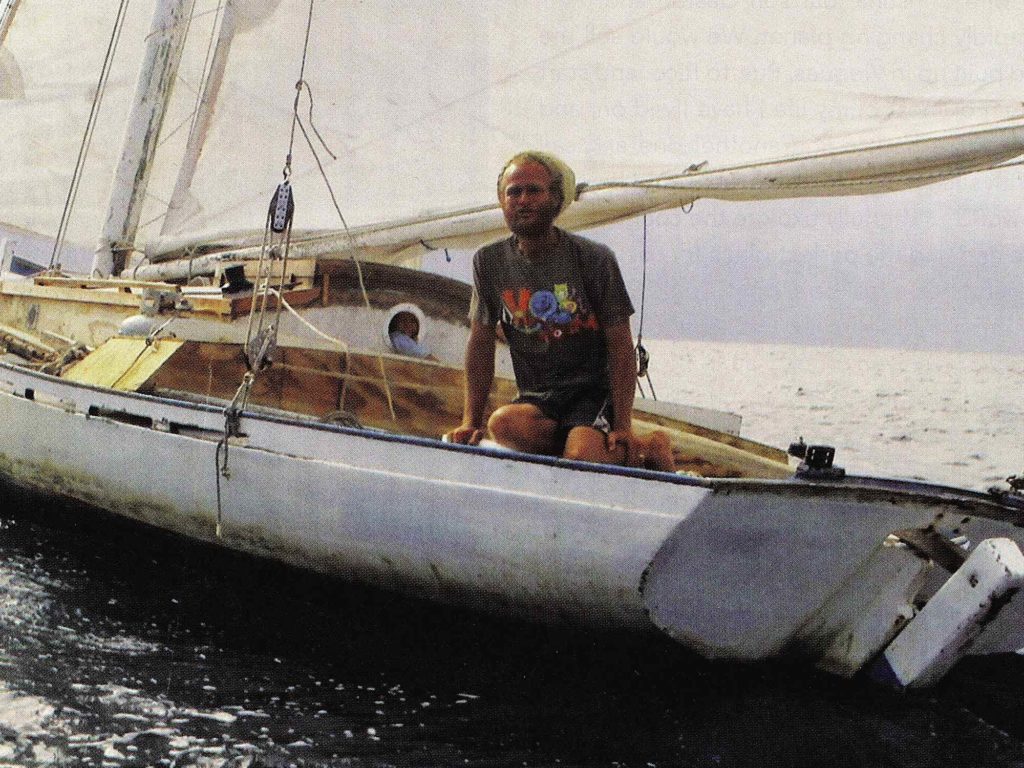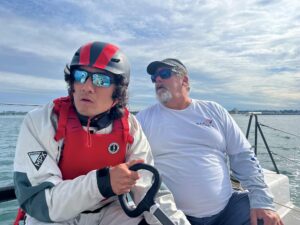
Way back when, in the early 1980s, I landed an editorial assistant’s job at this very magazine. I was at the outset of my own journey not only as a journalist, but also as an offshore sailor. As such, a helpful colleague handed me a book called Sea Quest: Global Blue-Water Adventuring in Small Craft, written by Charles A. Borden and published in 1967. “Read this,” he said. “It’ll explain a lot.”
Man, he wasn’t kidding. I didn’t just read it; I devoured it. Borden, a long-range voyager himself, produced a remarkable, highly researched work that somehow managed to combine the history of seagoing craft and the magic of bluewater sailing with intimate profiles of dozens of sailors and their boats. One of them was a handsome, strapping dude (in his accompanying photo, he’s a dead ringer for actor Ed Harris) named Peter Tangvald.
Of Tangvald’s boat, Borden writes, “Dorothea I [is] a 32-foot cutter with no motor, no electricity, no transmitter, no cockpit, no head, no skin fittings—a true wanderer with no home port [that] completed a five-year voyage around the world at Brixham, England, in 1964.” And here’s Borden’s take on the skipper: “A former loner, an original, and a competent individual, Tangvald is as good an example as Slocum of the innate independence of the devoted small-ship sailor.” Well then.
But in the mid-1960s, Tangvald was just getting started. And in the years to come, he would leave not only countless miles in his wake, but also plenty of havoc. Twice he went to sea with young wives who never again set foot ashore. Were Tangvald’s accounts of their disappearances truthful or—gulp—as it was often rumored, was the “former loner” the one responsible for their absence?
Oh, and one other thing: Tangvald sired a son, the complex subject of a remarkable new biography by marine journalist (and former CW senior editor) Charles J. Doane entitled The Boy Who Fell to Shore: The Extraordinary Life and Mysterious Disappearance of Thomas Thor Tangvald. The title brings to mind the 1976 science-fiction movie The Man Who Fell to Earth, in which David Bowie plays an alien who crash-lands on Earth and discovers unexpected success and debilitating despair in his new and strange surroundings. It’s an apt comparison, for Thomas Tangvald very much suffered the same fate.
Hopefully without giving too much away, I can reveal that Thomas’ disastrous crash landing was not from space, but rather on the reefs off Bonaire at age 15 while being towed south from Puerto Rico on a leaky sailboat by his father on another compromised vessel—a ridiculous episode that was somehow even more bizarre and half-baked than it sounds. Neither his father nor his sister, Carmen, survived, but half-naked Thomas was able to scramble onto his surfboard and somehow managed to make it to safety.
It’s the opening scene in Doane’s riveting narrative. Now, Thomas, orphaned and in shock, was the one just getting started. So too is the author.
It turns out that Peter Tangvald made one sound decision in his later years: With a faltering heart, he enlisted his old sailing mate Edward Allcard and his wife, Clare, to take care of his children in the event that anything happened to him. And when Thomas fell to shore, the Allcards indeed took him under their wing. Clare, in particular, became an insightful primary source for the incredible tale that follows. (As his way of giving back for all the assistance he received, Doane is donating proceeds from the sale of the book to the young family Thomas left behind.)
Like father, like son, in more ways than one. Indeed, like his eccentric old man, Thomas was a talented and tenacious sailor with the desire and ability to sail far on the simplest of vessels, not unlike the ones he was raised on. Furthermore, like Peter, he left behind confusion and heartache, and far more questions than answers.
It’s a legacy nobody wishes for, a “sea quest” that went very, very wrong. It also makes for a story that’s hard to put down.
Herb McCormick is a CW editor-at-large.








